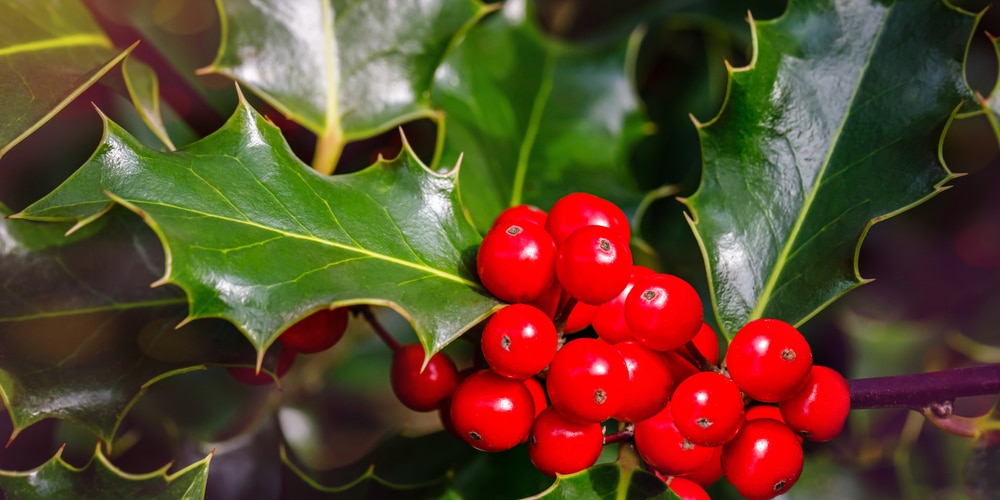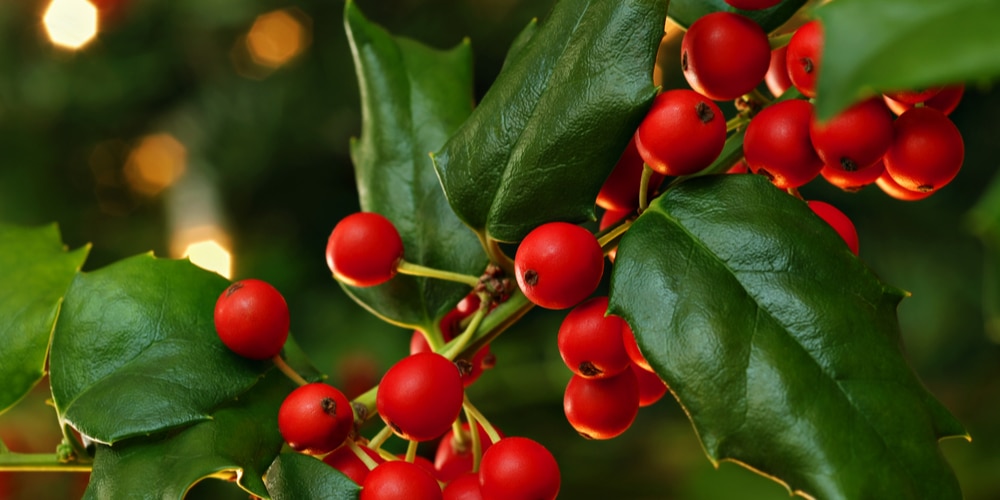Holly is known for its glossy green leaves and red berries. This popular holiday plant can be found in many homes during the Christmas season. Its spiny leaves make it an ideal plant for hedges and topiary, and lush green foliage is perfect for filling in gaps in gardens. But can this plant survive in Colorado’s weather conditions?
Quick Answer
The truth is, the traditional hollies from the Eastern part of the US are not well-suited for the Western climate. Because hollies require soil that is both acidic and moist, they can struggle to grow in the alkaline and dry conditions of Colorado.
Can You Grow Holly in Colorado?
The truth is, the traditional hollies from the Eastern part of the US are not well-suited for the Western climate. Because hollies require soil that is both acidic and moist, they can struggle to grow in the alkaline and dry conditions of Colorado. In addition, hollies are susceptible to a number of pests and diseases, which can make it difficult for them to thrive in this state.
Despite these challenges, it doesn’t necessarily mean that you can’t grow holly in Colorado. If you’re determined to have this festive plant in your home or garden, there are a few things you can do to improve its chances of survival.
The Best Varieties of Holly for Colorado
If you’re determined to add a holly bush to your Colorado landscape, there are a few varieties that are more likely to thrive in this state. While it’s true that your choices for holly varieties are limited when you live in a state with a drier climate, other hybrid varieties have been bred to be more tolerant of these conditions.
Some of the best varieties of holly for Colorado include:
Blue Boy Holly
Known for its beautiful blue berries, the Blue Boy Holly is a favorite among Colorado gardeners. This holly grows best in full sun to partial shade and prefers well-drained soil. It’s an evergreen shrub that can reach up to six feet tall and eight feet wide. Blue Boy Holly is a low-maintenance plant that is deer and drought resistant.
This variety was bred to be more tolerant of the hot and dry conditions of the Western US, making it a good choice for Colorado gardeners.
Blue Girl Holly
Considered to be the hardiest among all the other hollies, the blue girl holly is a fast-growing shrub that can reach up to 8 feet in height. It is an evergreen with small, dark green leaves and berries that grow in clusters. This holly is native to the southeastern United States but can also be found in Colorado. Throughout the year, it displays beautiful foliage that makes it a perfect ornamental plant.
The blue girl holly thrives in full sun but can also tolerate partial shade. It is adaptable to different types of soil as long as it is well-drained. This shrub is drought-tolerant and can withstand cold winters. To ensure that your blue girl holly grows healthy and strong, make sure to fertilize it regularly.
Oregon Grape Holly
This native variety is known for its glossy green leaves and purple berries. It is a low-growing shrub that only reaches up to three feet in height. The Oregon grape holly is an evergreen that can be found in the Western part of the United States, including Colorado. It produces beautiful foliage all year round.
Their spiny and bright green leaves turn into a deep purple color during the winter months, bright yellow flowers appear in the spring, and small berries grow in clusters during the summer.
This holly can survive in alkaline and dry soil, unlike the traditional varieties. It is also tolerant of cold winters and hot summers. The Oregon grape holly is a low-maintenance plant that doesn’t require much fertilization.
Essential Things to Remember When Caring for Holly in Colorado
As mentioned earlier, there are additional challenges to growing holly in Colorado. But with the right care and attention, you can help your plant survive and even thrive in this state. Here are a few important things to remember when caring for holly in Colorado:
Hollies Require More Water Than Most Plants
One of the most important things to remember when caring for holly in Colorado is that this plant requires more water than most other plants. Due to its shallow root system, holly bushes need to be watered frequently. During the hot summer months, you may need to water your holly bush daily. To ensure that your plant gets enough water, consider using a soaker hose or drip irrigation system.
Don’t Overwater
Despite the fact that hollies need more water than most other plants, it’s important not to overwater them. When the roots of a holly bush are constantly wet, they can begin to rot. This can lead to a number of problems, including root rot and fungal diseases. To avoid overwatering your holly bush, make sure to check the soil before watering. The soil should be dry to the touch before you water your plant.
Fertilize Regularly
Another important thing to remember when caring for holly in Colorado is to fertilize regularly. This will help your plant get the nutrients it needs to grow strong and healthy. When fertilizing, be sure to use a Holly-tone or other fertilizer specifically designed for hollies.
Mulch Around the Base of the Plant
To help your holly bush retain moisture and protect its roots, it’s important to mulch around the base of the plant. This will also help to keep the soil cool during the hot summer months. When mulching, be sure to use organic mulch, such as pine straw or wood chips.
Provide Protection from the Wind
Hollies, regardless of their variety, are susceptible to damage from strong winds. To help protect your plant, consider planting it in a protected area or using a windbreak.
Does Holly Grow in Colorado?: Final Thoughts
Considering all of the challenges of growing holly in Colorado, you may wonder if it’s worth all the effort. Holly can still be a beautiful and rewarding addition to your landscape, no matter how much patience and determination it requires.
With the right care and attention, your holly bush can thrive in this state. So if you’re up for the challenge, go ahead and give it a try! Remember the pointers we’ve shared in this article, and you’ll find yourself growing beautiful holly bushes in no time.
Related Article: When to Cut Holly for Christmas


